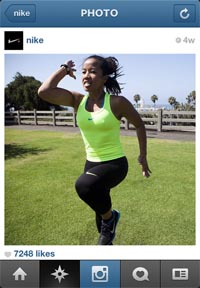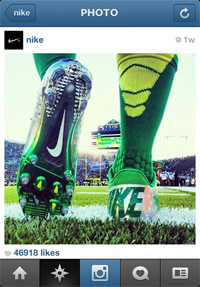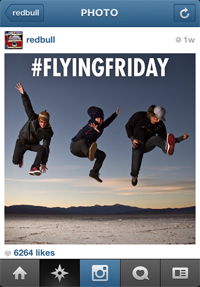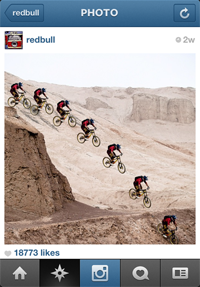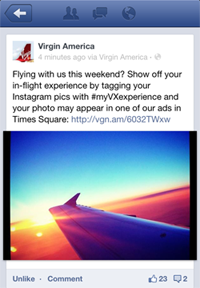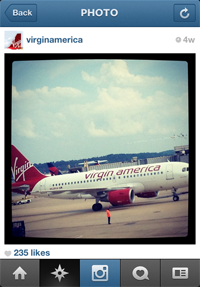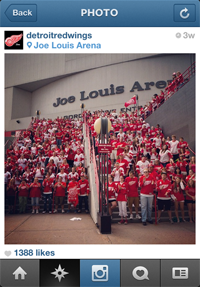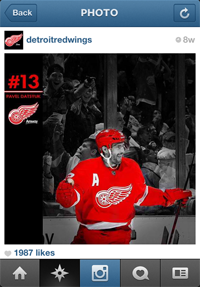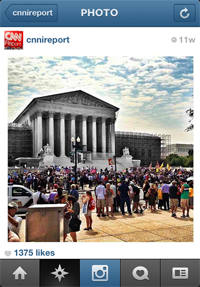Instagram: Are Brands Getting the Picture?
Posted in Search & Social
As social media users, we love photos. We capture and share images of our travels, families, neighborhoods, sunsets, and yes, our breakfast (or lunch or dinner). 250 million photos are uploaded to Facebook every day (Search Engine Journal), and last year, it was estimated that 4% of the photos ever taken are hosted on Facebook (tech dirt).
Photos have also evolved to become a key part of social strategy for brands and businesses looking to stand out in a busy Facebook news feed or Twitter stream. With the right image(s), brands can entertain and inform, or demonstrate how their products and services can improve their customers' lives.
Enter Instagram. Launched in 2010, the photo sharing app (available for iOS and Android) has exploded in popularity in 2012, growing from 15 million users in January to over 100 million in September (Mashable). It's no surprise that marketers have sought to capitalize on this significant spike in growth. For brands using photos to tell their story via social media, Instagram offers a unique opportunity to diversify content strategy while providing yet another online venue to connect with customers.
Do I really need to worry about another social network?
We heard the same question about Pintrest earlier in the year, and as is the case with Pintrest, Instagram certainly isn't a perfect fit for every business. However, as social media users access social channels via their mobile devices with increasing frequency, Instagram enables consumer and lifestyle brands to stay in front of customers while integrating their brand message into users' increasingly mobile lives.
So how is Instagram different?
There are a number of factors that differentiate Instagram from other social channels. One of the most obvious differences is the absence of sharing functionality, at least so far. Users can like, comment on, or tweet other users' photos, but aren't able to share them with their own followers within Instagram. Instagram also limits the features available in its Web-based version, which encourages users to access the platform via the Instagram mobile app. On the plus side, Instagram's integration with Facebook, Twitter, Tumblr, and Flickr enables brands to easily share content across multiple platforms with one tap of the finger. A link to the Instagram version of the photo is included with each post, driving traffic to the corresponding Instagram profile and encouraging organic growth.
Aside from the differences in functionality, I've noticed one characteristic of Instagram that really stands out: engagement. A popular buzzword in the social media community, engagement can mean many things, but generally refers to the level of interaction (clicks, likes, comments, shares) with the content you create and share. While using Instagram with our own clients, we've found that engagement rates (engaged users divided by total followers) for Instagram posts often far exceed that of Facebook, Twitter or Google+. It's not uncommon for an individual photo to receive more likes and/or comments within the Instagram app than the same image receives on Facebook, even though the Instagram account has much smaller following.
The key takeaway here is that Instagram users are very active. They're spending a lot of time consuming content within the Instagram app, rather than simply using it as a platform for sharing their own content. Since the presence of brands and businesses is much smaller on Instagram than on other social channels, a unique opportunity exists - at least for now - for brands to connect with customers in an online environment with far fewer competing messages.
5 Brands Using Instagram Effectively
There are plenty of examples of brands using Instagram, but these familiar names below use an effective combination of lifestyle, entertainment, and brand messaging to diversify their online presence while expanding their reach.
Nike
Nike has built its brand around inspiring messaging and imagery, like its iconic "Just Do It" campaign. The athletic equipment and apparel retailer continues this strategy with its Instagram account, mixing images of professional and collegiate athletes on the playing field with photos of individuals around the globe using Nike products.
Red Bull
Red Bull's sponsorship of adventure sports athletes has endeared it with skiers, skateboarders, base jumpers, rally car drivers, and thrill seekers from a host of other genres. Followers of Red Bull's Instagram account stay "stoked" with dynamic images of athletes in their element, bringing life to Red Bull's claim that their energy drink "Gives You Wings."
Virgin America
Capitalizing on travelers' propensity to share photos, Virgin America ran a recent promotion (below left) which asked Virgin America passengers to tag their Instagram photos with a custom hashtag to enter. Winners' photos were to appear in Virgin America ads in Times Square.
Detroit Red Wings
Sure, I'm a little biased here, but I like how the NHL team in "Hockeytown" generates excitement among its fan base all year long with a creative mix of on-ice action, player profiles, team history, and user photos.
CNN iReport
CNN's online reporting arm dedicated to "citizen journalism" features images captured by contributors and users, like the one below left of a picket line for the Chicago teachers' strike, to create a news and entertainment source with real-time authenticity.
Are you using Instagram for your business? We would love to hear about your experience and any thoughts, tips, or suggestions we might have missed. What are your favorite brands on Instagram? Let us know in the comments!
